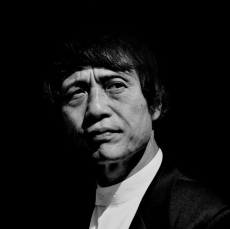
Email: emanuelealbertocirello.98@gmail.com
Total Article : 76
About Me:I am a Year 13 student which aspires to be an architect. I am interested in anything I don't yet know, and I mostly write about art, politics , Italian culture and inspirational people, although I will try to write for as many categories possible, just to test myself and get to know more things.

Auto-didacticism is a practice where an individual dictates what, when and how to study. It involves a variety of disciplines, from music to art and even science in some cases. In the field of architecture, self-teaching is much harder to be officially and legally recognised and to the present day only a few countries allow auto-didacticism in architecture, as currently the title of “architect” is protected in most countries. In the 19th and 20th century it was more common for artists to be self-taught, and architects such as Mies Van Der Rohe, Le Corbusier and Frank Lloyd Wright all mastered the profession by implementing their skills through the creativity and productivity of the workplace.
Tadao Ando is a rare 21st self-taught architect who has reached international success in the last few decades and has revolutionised design with his “critical regionalism”. He is the recipient of the 1995 Pritzker Prize and the Royal Gold Medal by the RIBA in 1997. Tadao, from being a truck driver and a boxer, became an architect by attending drawing night classes and correspondence courses on interior design, alongside visits of buildings and designs of contemporary masters. In 1968, he established his own design studio, Tadao Ando Architects and Associates. Through the years, he consolidated a style rooted in modern tradition but tied to the artistic heritage of Japan, Tadao's homeland, whose progressive approach mediates between the global and local characteristics of architecture. The large expanses of naked architectural concrete walls, with large windows and unadorned wooden and stone interiors that emphasise nothingness and highlight the beauty of raw simplicity, creating a “haiku effect”. Much like architects such as Foster and Aravena, Tadao Ando is vocal about how architecture can change society as “to change the dwelling is to change the city and to reform society”.
His architectural style focuses on the simplicity and size of structures, to embody the Japanese concept of “Zen”, which focuses on simplicity and inner spirituality rather than exterior appearance much like Tadao's architecture. Besides emphasising on the connection between Japanese traditions and global architecture, Tadao Ando style also focuses on the relationship between nature and architecture, which is facilitated by his studying of architecture through “physical experience”. As part of his ideal of “reforming society”, he intends people to experience the beauty of nature through architecture. Natural elements such as sunlight, wind and rainfall are a distinctive influence on his style. His body of work is recognisable by its peculiar and creative use of natural light and for organic forms that follow the shape of the surrounding landscape. The enormity of his spaces are characterised by complex three dimensional circulation paths that intersect both interior and exterior spaces as shown in the “Hyogo Museum of Art” in Kobe and the astonishing “Church of the Light” in Osaka. The structural simplicity complemented by the use of unadorned concrete is a recurring characteristic, visible in buildings such as the “Pulitzer Foundation for the Arts” building and the housing complex in Rokko, Kobe. Tadao Ando is one of those creative minds that does not come across very often in nature.
From working as a truck driver and boxing at an amateur level and to then become one of the most influential architects of our time after being inspired by a visit to Frank Lloyd Wright's “Imperial Hotel”; he truly is the epitome of auto-didacticism and perhaps even architecture.
Image credits: https://static.dezeen.com/uploads/2016/11/tadao-ando-portrait-_dezeen_sq.jpg

0 Comment:
Be the first one to comment on this article.